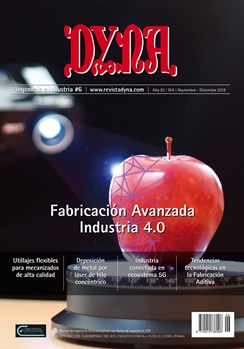A RELIABLE MACHINING PROCESS BY MEANS OF INTENSIVE USE OF MODELLING AND PROCESS MONITORING: APPROACH 2025
Keywords:
monitorización, modelización mecanística, tensiones residuales, rotores integrales, Selective Laser Melting, SLM, Monitoring, mechanistic model, residual stresses, integral bladed rotor,Abstract
This paper covers three significant aspects. Firstly, a global approach to manufacture high-added value components is presented.. This process involves a holistic perspective for the entire process: from design conception to market implementation. It needs to be emphasized that the manufacturing process implies a global challenge in term of modeling and systems integration. Moreover, particular progresses in programming, modeling, measuring, monitoring and customers´ quality requirements involved a global improvement in the mentioned cycle. Secondly, inside the different defined stages there are several developments of industrial interest.. On the one hand, a cutting forces predictive model implies parameters optimization in terms of swarf section (feed,axial and radial depth of cut). On the other hand, modeling the finishing process to determine thermal load and induced stresses, leads to the possibility of limiting the cutting speed (Vc) adequately to the process specifications. Finally, in-situ monitoring collects information that indicates machining program issues or efforts out from desired levels. Moreover, monitoring would be able to predict batch production threshold value limits. In order to apply described approach, an aeronautical industry high-added value component was selected as demonstrator. Defined component consists of a single blade of Inconel 718 with thin walls, generated by Selective Laser Melting (SLM) additive process. Results showed that applying predictive models inside a global vision implied an adequate control of the process (spindle loads and unexpected cutting forces). This ensures in a further future a stable production of this type of components, such as Integral bladed rotors, coming from additive manufacturing. Keywords: Monitoring, mechanistic model, residual stresses, integral bladed rotor, Selective Laser Melting (SLM)Downloads
Published
2018-11-01
Issue
Section
ARTICULOS

